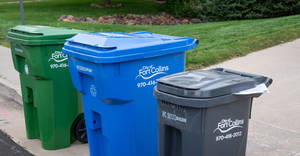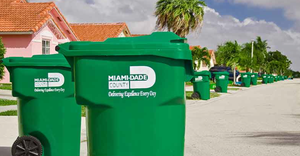The Difference Between “Zero Waste to Landfill” and “Zero Waste”
The pioneers of the zero waste movement were very clear in the mid-90s that “zero waste to landfill” was not the same thing as zero waste. We purposefully aimed high with our definition of zero waste being focused on making the best choices with our natural resources — from extraction to production to consumption to disposal. The zero waste journey involves a constant evaluation about our materials’ choices and a strong commitment to eliminating waste, not just treating it.
There are many communities and businesses making great strides toward zero waste, like General Motors with their 97 percent landfill diversion rates at over 90 manufacturing facilities. But there others that are pursuing “zero-waste-to-landfill”, which is a laudable goal, but then they incinerate large amounts of their waste in an attempt to avoid the landfill. In the opinion of the zero waste International Alliance (ZWIA), that constitutes greenwashing and a misuse of the term zero waste.
The problem with having such a singular focus on the landfill implies that burning waste to make energy is an acceptable process. Waste-to-energy (WTE) is a disposal technology that destroys the resource forever and doesn’t reduce waste or protect natural resources. It also produces large amounts of ash that must be landfilled anyway, so in reality, there is no such thing as zero waste to landfill even if you burned 100 percent of your discards!
The people who are pushing the hardest for a true zero waste future are clear on the view that the current WTE technologies in the marketplace are actually a waste of energy, money and natural resources. For all the breathless talk about “thermal conversion technologies” (including plasma, gasification and pyrolysis), the only commercially-viable technology in the industry remains to be the Mass-Burn Systems that have a long list of problems, including the fact that it has the most CO2 emissions per fuel type, its emissions contain dangerous air pollutants, it’s the most expensive form of electricity, and it fails to create a fraction of the jobs created by recycling and composting. And, according to the EPA and others, WTE produces only a fraction of the energy that can be saved through recycling.
ZWIA defined a zero waste company or community as one that achieves at least a 90 percent resource recovery rate, which means there may still be a 10 percent stream of mixed materials, some of it being non-recyclable, non-compostable and non-reusable discards that will need to be disposed. For that stream of “residuals”, ZWIA talks about “bio-stabilization and bio-energy.”
The German and Italian approaches are the new way forward:
Sort out any remaining recyclables
“Bio-stabilize” the mixed waste in an anaerobic digester to capture the biogas and use it for energy
Landfill the remaining inert material in a dry tomb landfill
The Italians have taken an extra step by sorting out all the non-recyclable items in the residuals, identifying which company made and/or marketed them, and then contacting those companies to start a dialogue about redesigning the product or package so that it is recyclable, compostable or reusable and remains in the circle of commerce.
I applaud groups like the Green Manufacturers Network for creating workshops about waste reduction and the Cradle to Cradle Products Innovation Institute for their leading edge vision of re-designing the stuff of our lives to eliminate waste. The pursuit of zero waste in business is a creative effort. For example, Xerox has been redesigning products for years to reduce the number of parts so models can be more interchangeable. BMW has reduced the number of different types of plastics it uses so more of the car can be recycled more quickly. And Amazon.com’s frustration-free packaging program moves manufacturers from plastic clamshells and wire ties over to recyclable cardboard, saving resources and fostering better customer satisfaction.
I am optimistic about the future because the next generation of leaders is under no illusion that our planet is in crisis and they are already making smart business decisions to succeed in a world of declining resources and growing populations. But it is important that those of us in the “waste management” industry do our part to support them, and that means being clear about what we are promoting and avoid confusing the non-experts about what is and isn’t zero waste.
The true goal of zero waste is not just zero waste to landfill or zero waste to energy, but redesigning our entire cycle of resource extraction, consumption and discard management so no resources are wasted at any point along the way. So if your goal is simply to avoid the landfill, then make that clear by using the phrase “landfill free” - and be sure to let us know what you end up doing with all that ash after you burn a bunch of stuff.
Eric Lombardi is the Director of Eco-Cycle International and is recognized as an authority on the social and technical aspects of creating community-based “Zero Waste” resource recovery programs.
About the Author
You May Also Like


